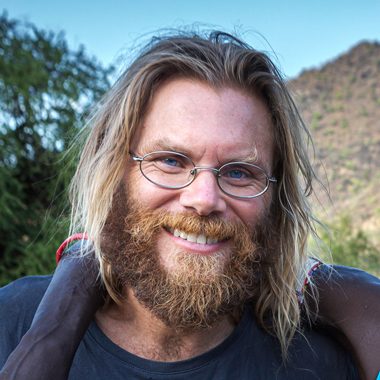The Larim tribe, known to their Toposa neighbors as Boyas, split from the great Murle nation after an argument over dinner. One Murle clan had invited another clan, but the other clan was not satisfied by how little gazelle meat was in the soup. They were offended and decided to migrate west. They settled in a mountainous area with plenty of water and fertile land. This is how the Larim tribe emerged, one of the most beautiful and unknown in South Sudan.
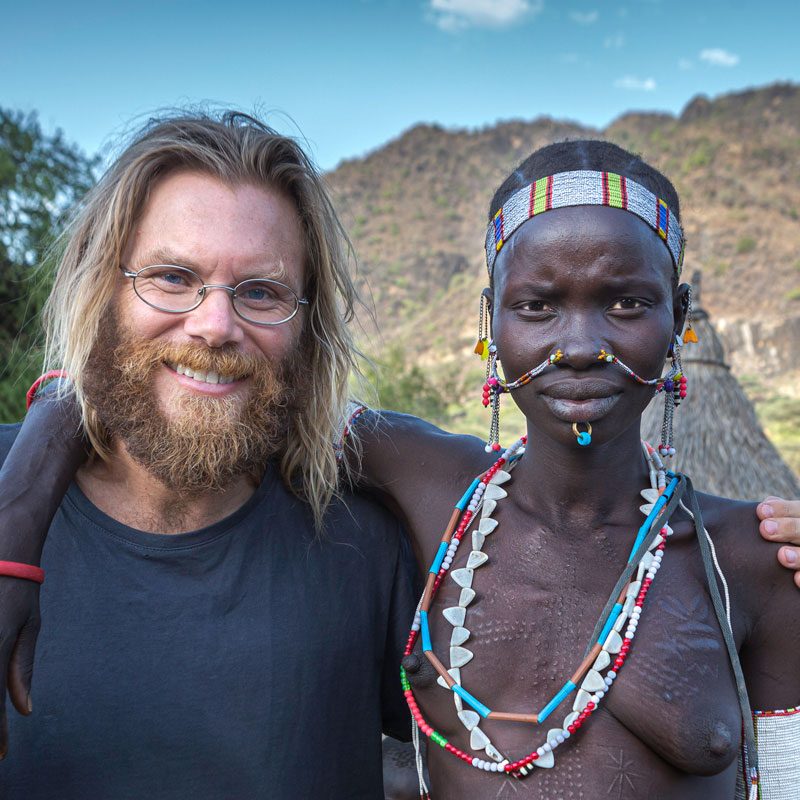
Joan Riera, anthropologist and founder of Last Places, had indications of the existence of a traditional tribe around the Didinga Mountains, in the Province of Eastern Equatoria. It was in the Camp15 market, on the road that connects Torit with Kapoeta, that he saw a young woman with a scarred face and arms and a hairstyle different from those he had seen to date, beautifully decorated with colored beads. Joan investigated, and the locals told her about the 'Boyas', an untamed people who lived beyond the Kimotong River. He slept in the Catholic mission, the next day he crossed the river and reached the Boya Hills, where he met the Larim. That was in 2012, and since then, he has forged a good relationship with this village, which he regularly visits with travelers from all over the world.
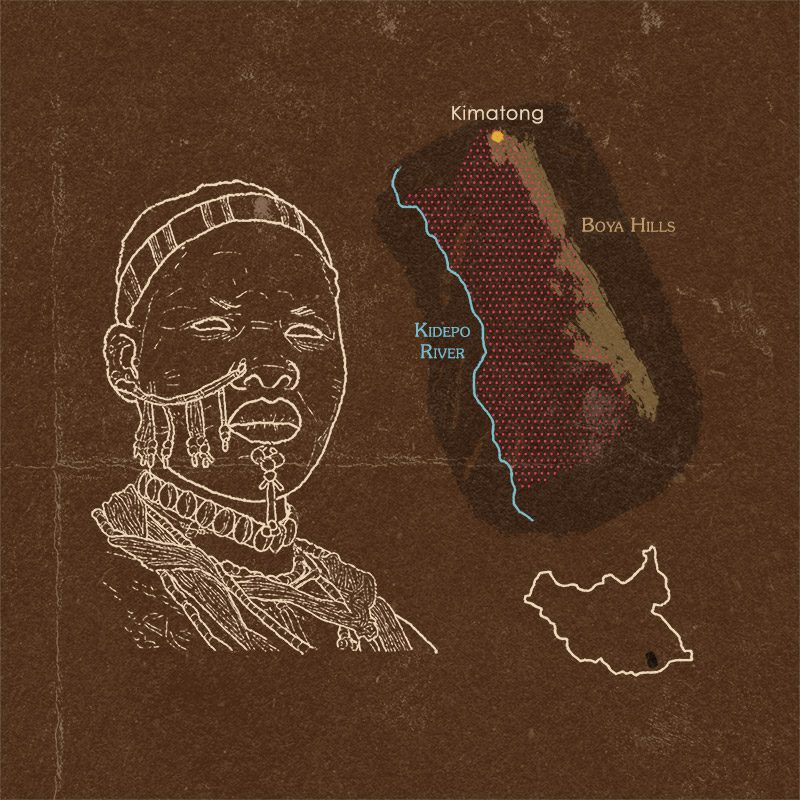
Location of the Larim tribe in the territory of South Sudan
Population and ecosystem of the Larim tribe
Around 20,000 Larim live scattered in settlements around the Boya Hills. The main village of the Larim is Kimatong, at the foot of the Boya Hills. Larim country is a rugged and hilly terrain, and the vegetation is that of rich savanna with high grassland and thick shrubby bushes.

Boya Mountains, fortress of the Larim. Mountain village, protected between the rocks. The Larim protect the old sacred trees that surround their villages.
Economy
The Larim are dedicated to agriculture and branching. While they engage in the cultivation of food crops like sorghum, maize, and beans, the bulk of their socio-economic activities rest on livestock herding, hunting, and fishing. Livestock is the only known natural resource in Larim country.
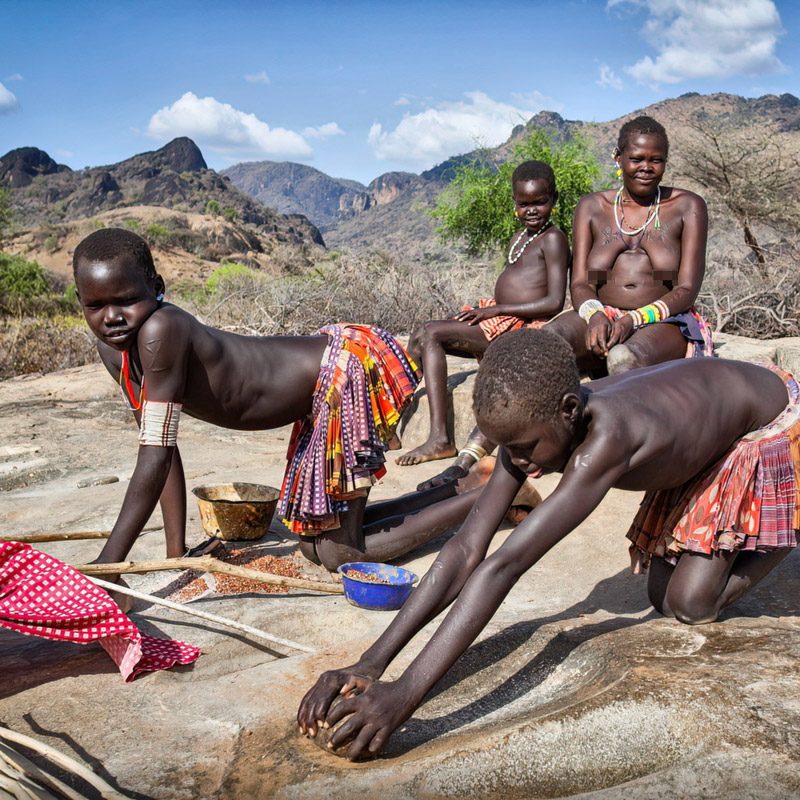
Meeting with youth Larim grinding grain during a trip to South Sudan
Do you want to meet the Larim tribe of South Sudan?
Discover their culture on our trips to South Sudan. Click here to see the scheduled trips to South Sudan.
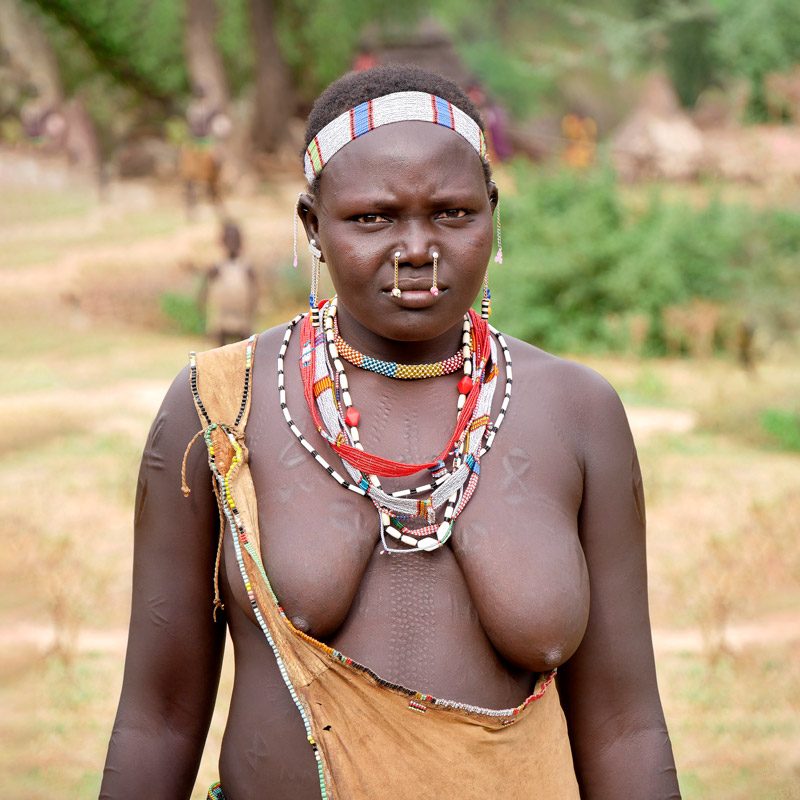
Married Larim woman wearing the traditional gazelle skin (only for festivals and ceremonies) and nose piercing.
Larim art and architecture
Their traditional dresses, made from gazelle skin, are also decorated with metal pieces (obtained from old bullets) and glass and plastic beads. They are undoubtedly the great artisan tribe of South Sudan.
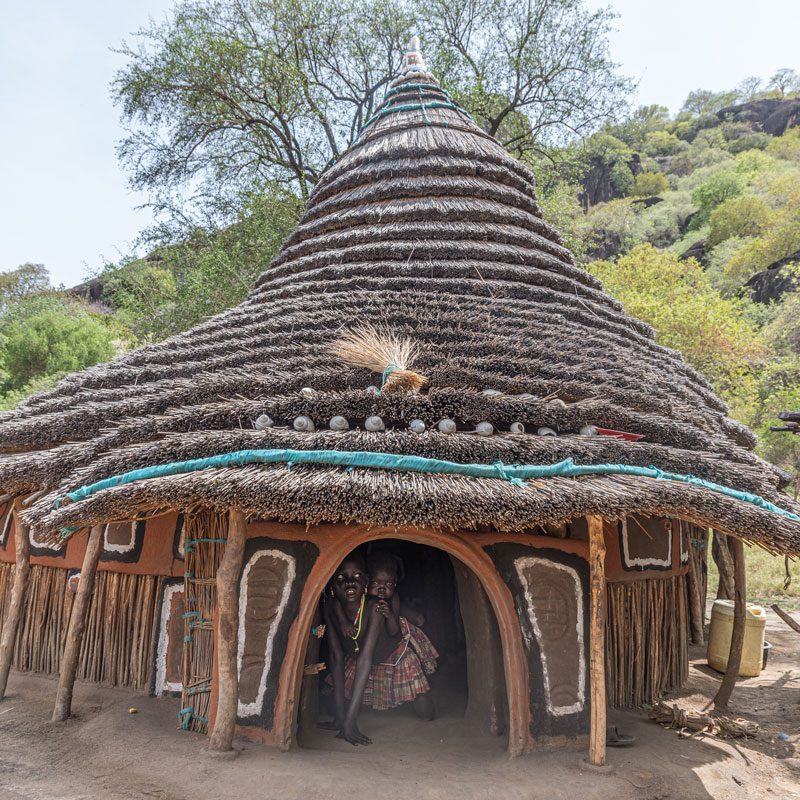
Traditional Larim house (vernacular architecture) with a roof built in layers of straw and decorated with geometric motifs and land snails.
The Larim stand out from the other tribes of South Sudan for their craftsmanship. They decorate their homes with delicate details. Also, they make spoons and gourd containers that they pyrograph and decorate with beads.
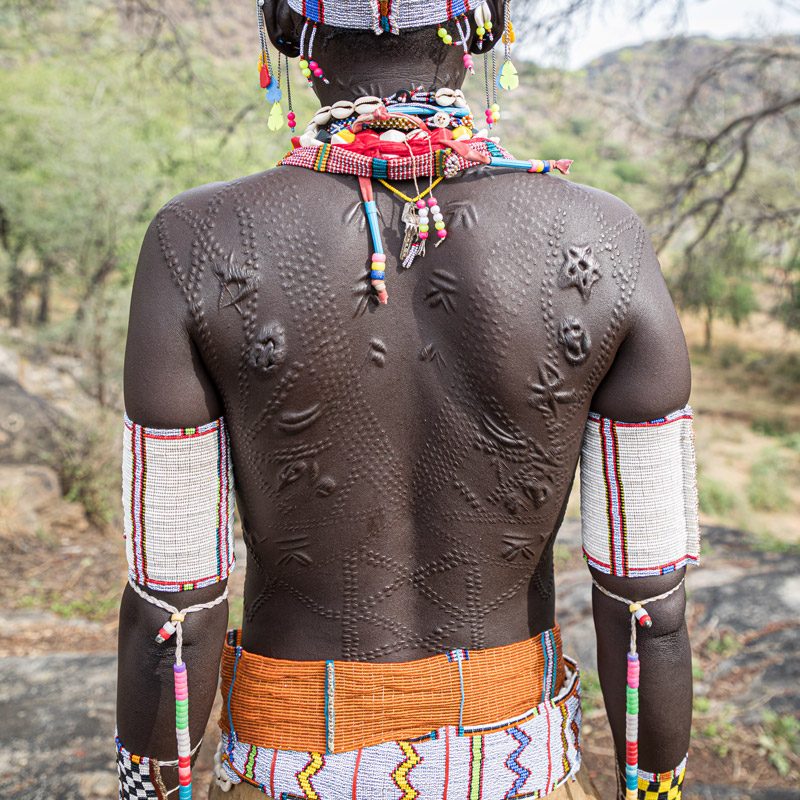
A young Larim woman with a deeply scarified back with abstract motifs and figures of plants, animals and modern weapons (Larim also suffered during the Civil War between 1956 and 2005).
The Larim tribe continues to practice scarification. Larim women usually decorate their bodies with a great variety of shapes. Also, they have piercings in their ears, nose and under the lower lip, above the chin.
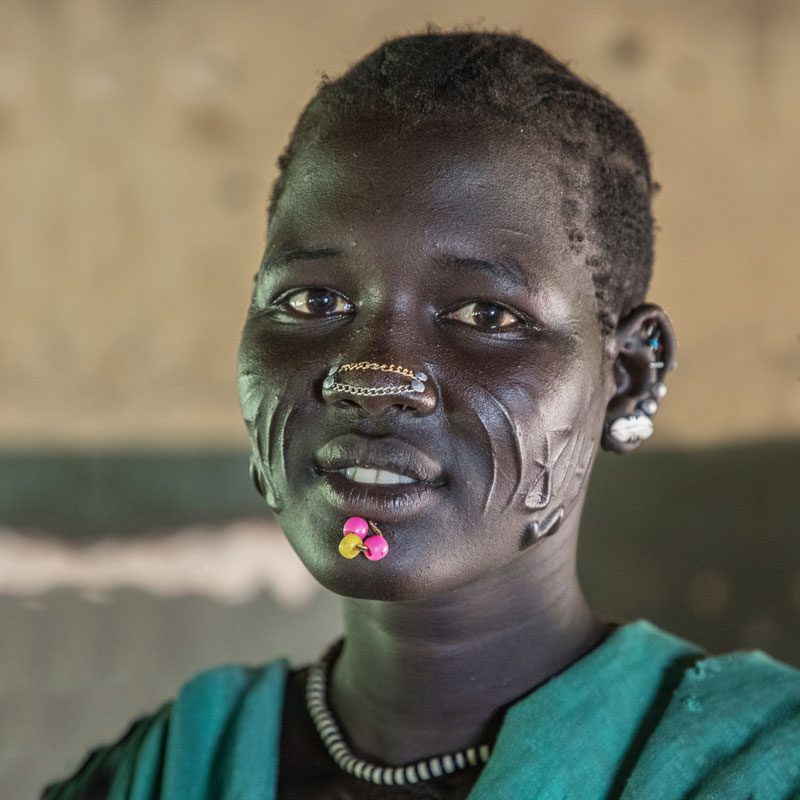
Young Larim woman with facial scarification and a metallic nose piercing.
Collaboration project with the Larim tribe of South Sudan
The Last Places project has put the Larim in the collective imagination of travelers interested in the last tribal societies in the world. Through a type of respectful and responsible tourism, the Last Places team is promoting the preservation of vernacular architecture in the 'Larim country', the reforestation (tree felling is practiced to expand crop fields), traditional culture and improving the living conditions of the local population with projects related to water and health. The Larim are a unique tribal minority in Africa that inhabits fragile and precious territory. Last Places works with the larim so that their world does not disappear.
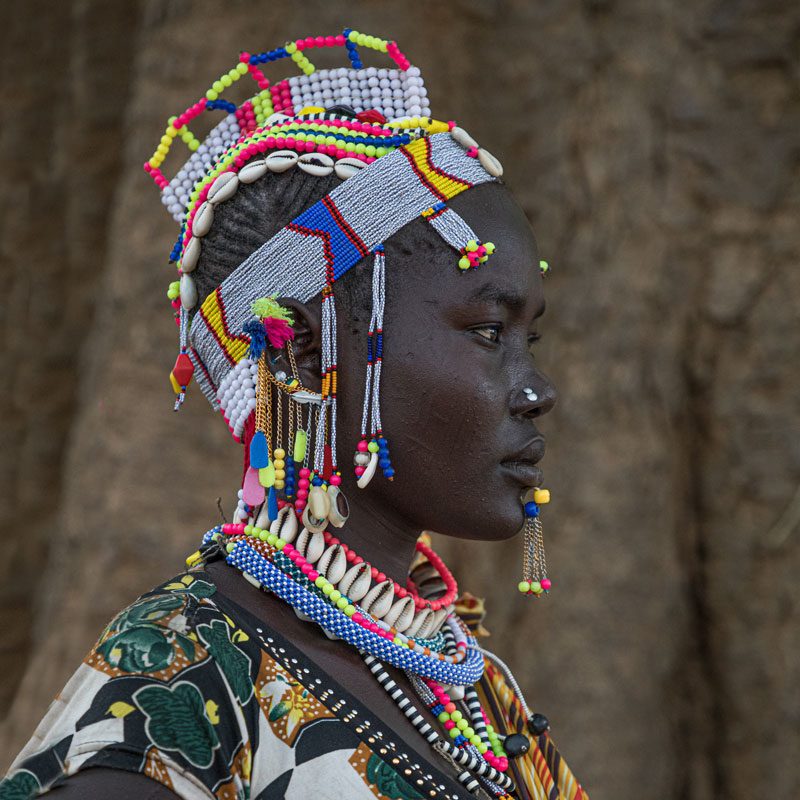
You can learn more about the larim tribe of South Sudan at www.101lasttribes.com
© Photos by Ana Robles, Aníbal Bueno, Jordi Zaragozà Anglès, Marcel Brau and Pepa de la Cruz during trips to South Sudan.
